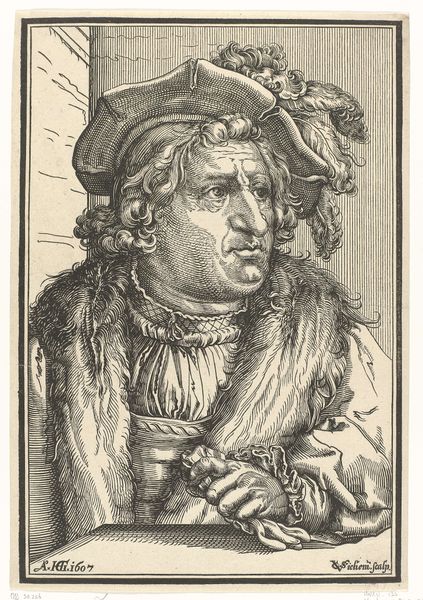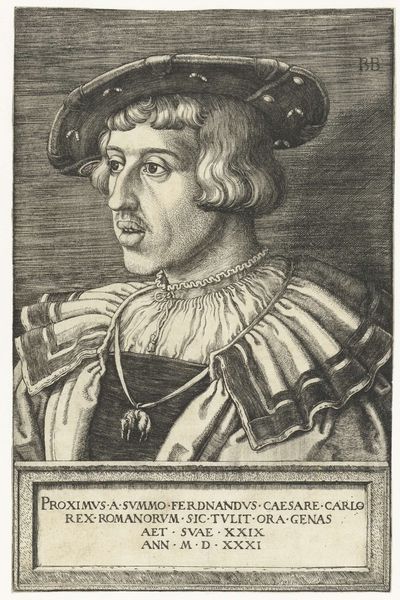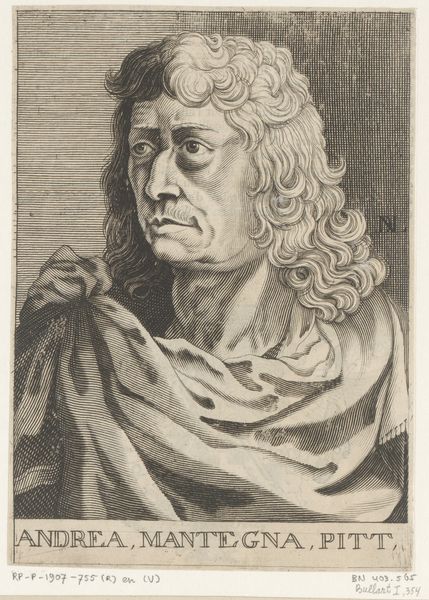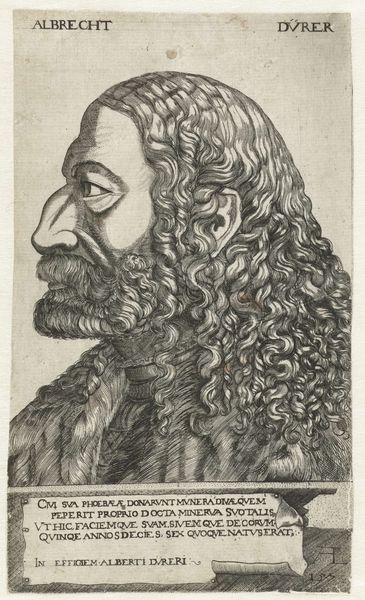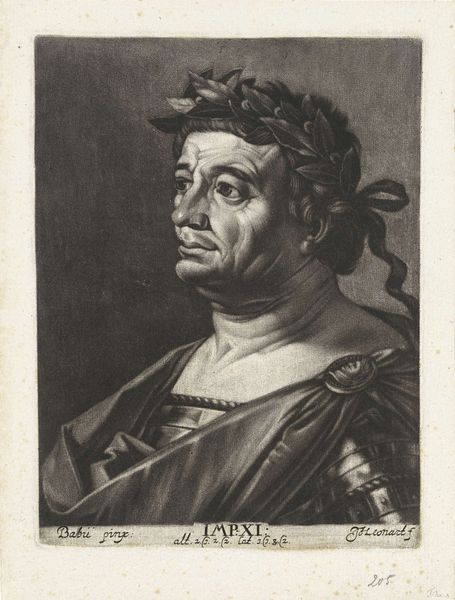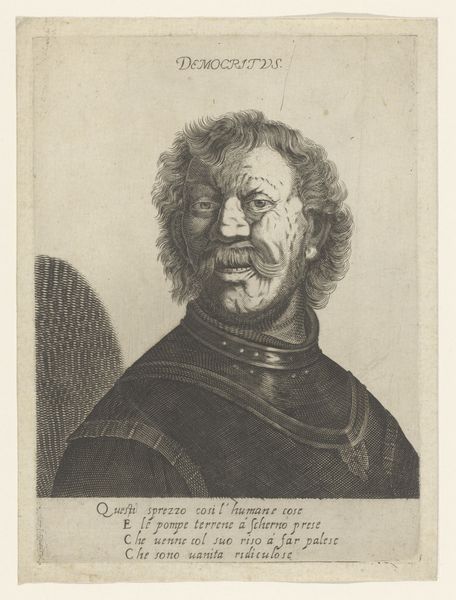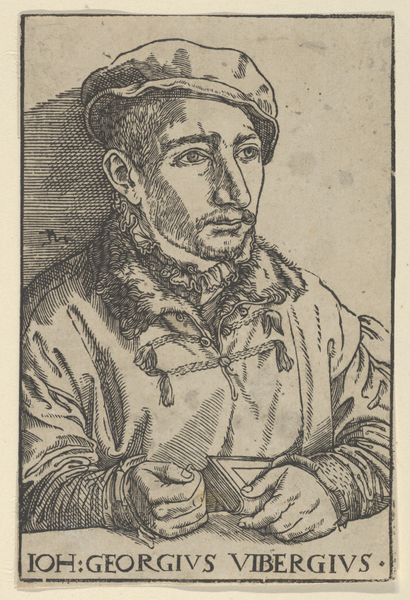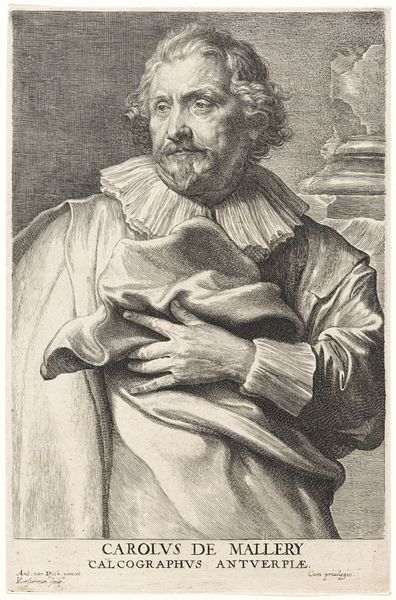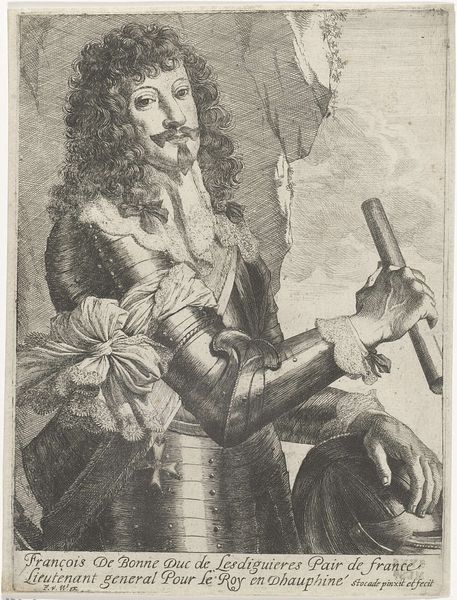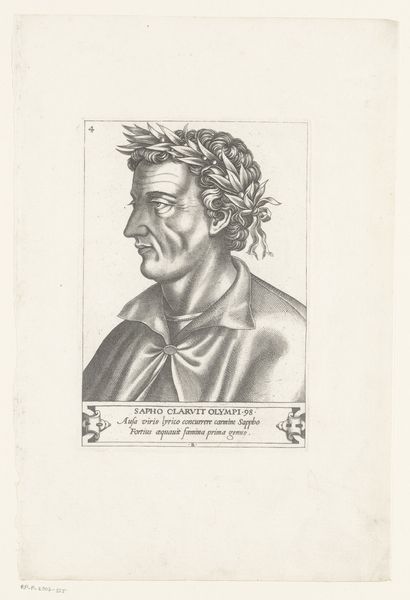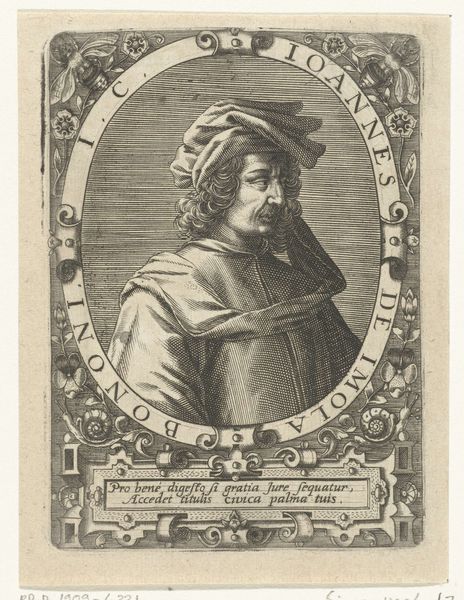
print, engraving
#
portrait
# print
#
mannerism
#
northern-renaissance
#
engraving
Dimensions: height 204 mm, width 140 mm
Copyright: Rijks Museum: Open Domain
Editor: So, this is Hendrick Goltzius's "Portrait of Gillis van Breen," made between 1586 and 1590. It's an engraving, currently held at the Rijksmuseum. What strikes me is how intensely the engraver detailed every aspect of Gillis's face. What kind of stories do you see in this print? Curator: Indeed. This portrait presents us with a network of symbols, doesn't it? Look at the very deliberate way Goltzius employs the burin. Each stroke contributes not only to form but to character. Consider, for instance, the man’s eyes; the slight puffiness could speak to a life of comfort or even anxiety. Notice also the elaborately styled hair and the ruff – what might those convey about the sitter’s identity? Editor: I guess the ruff signals status, but it almost feels performative… like a costume. The eyes you mention though, they almost seem to hold a different truth. Curator: Precisely. We read the material, but how do we decipher the emotional landscape suggested by the sitter’s gaze? Portraits of this era acted as status symbols, intended for a wide audience. Yet, portraits can never truly hold an exact likeness of a person. The image always negotiates between public display and the interior, hidden self. Consider this alongside other depictions of men during this era; what continuities do we observe? What deviations? Editor: It's amazing to consider the dialogue between what's presented and what's concealed. I didn't expect so much could be communicated, or, should I say, *suggested,* through an engraving. Curator: And isn't that the enchantment of iconography? That these images serve as echoes, resounding through time, inviting us to listen closely to the visual whispers of history.
Comments
No comments
Be the first to comment and join the conversation on the ultimate creative platform.

